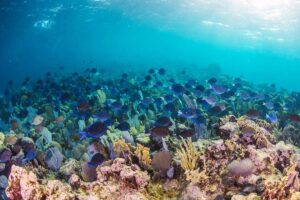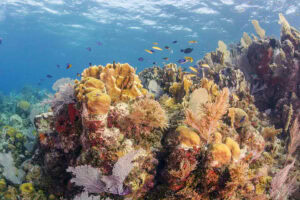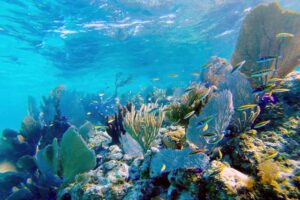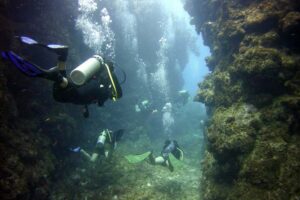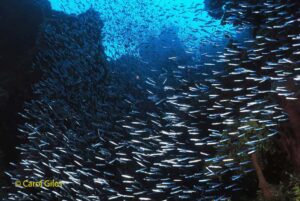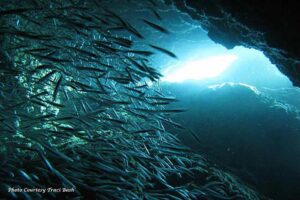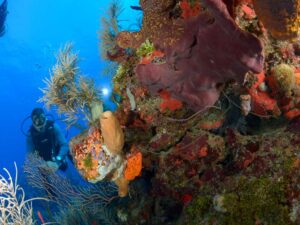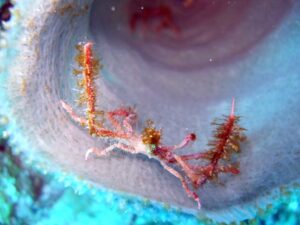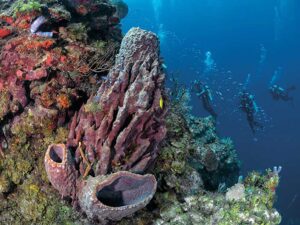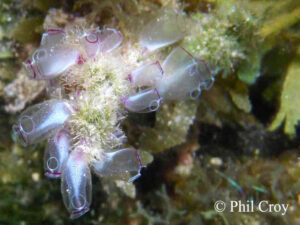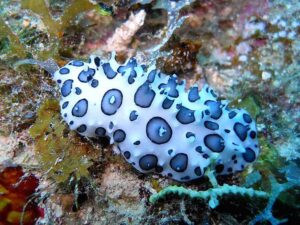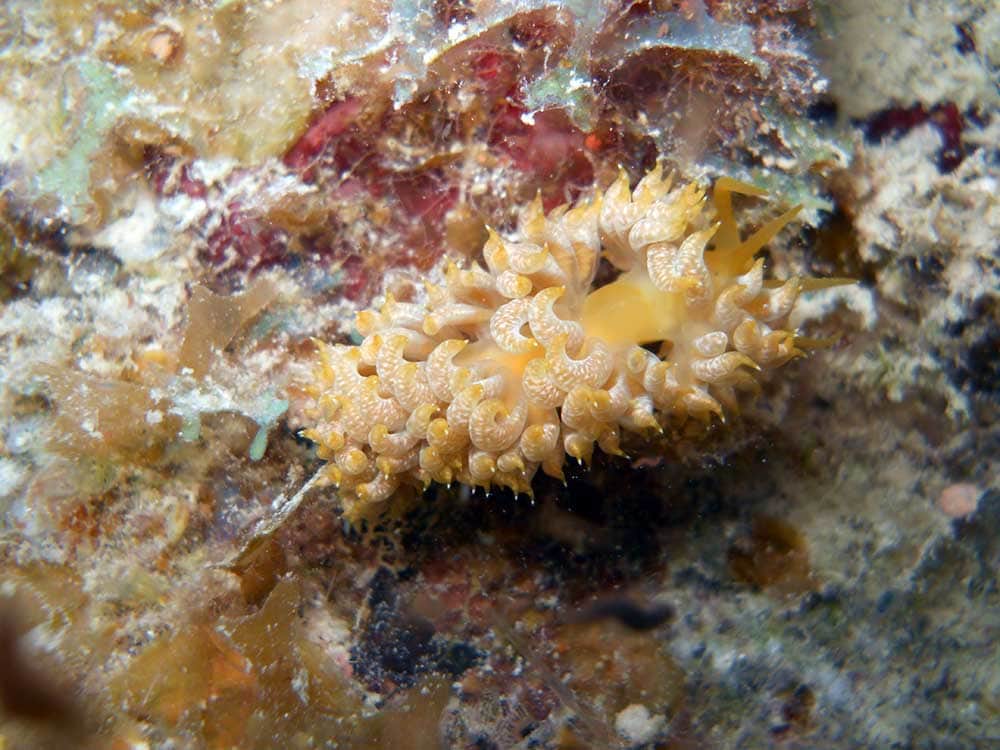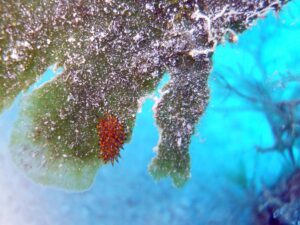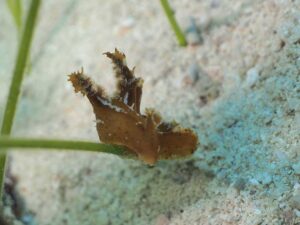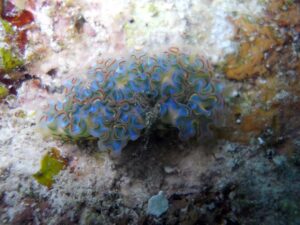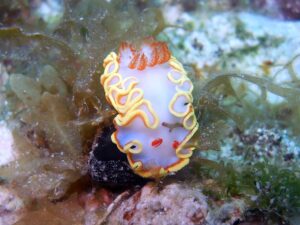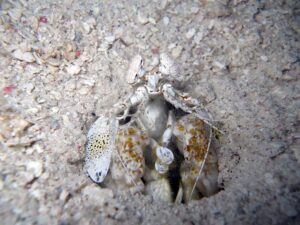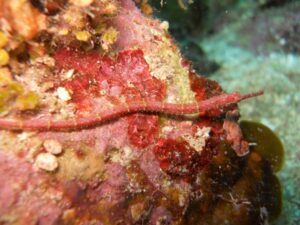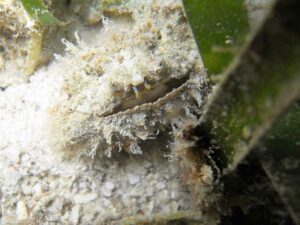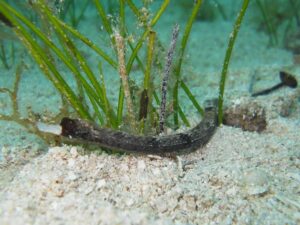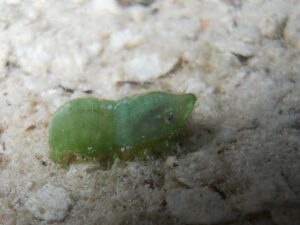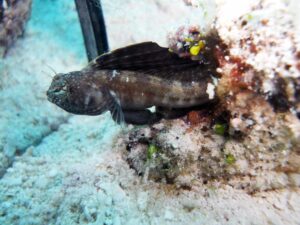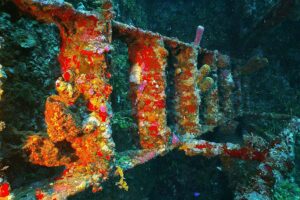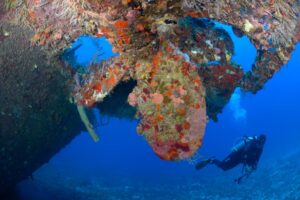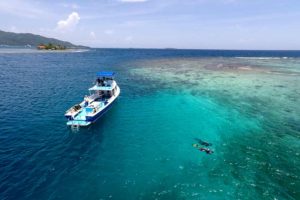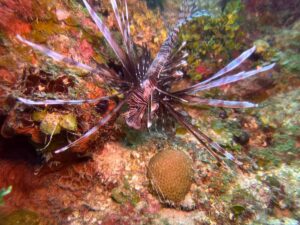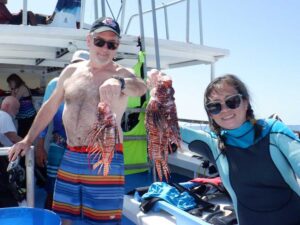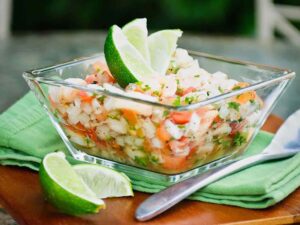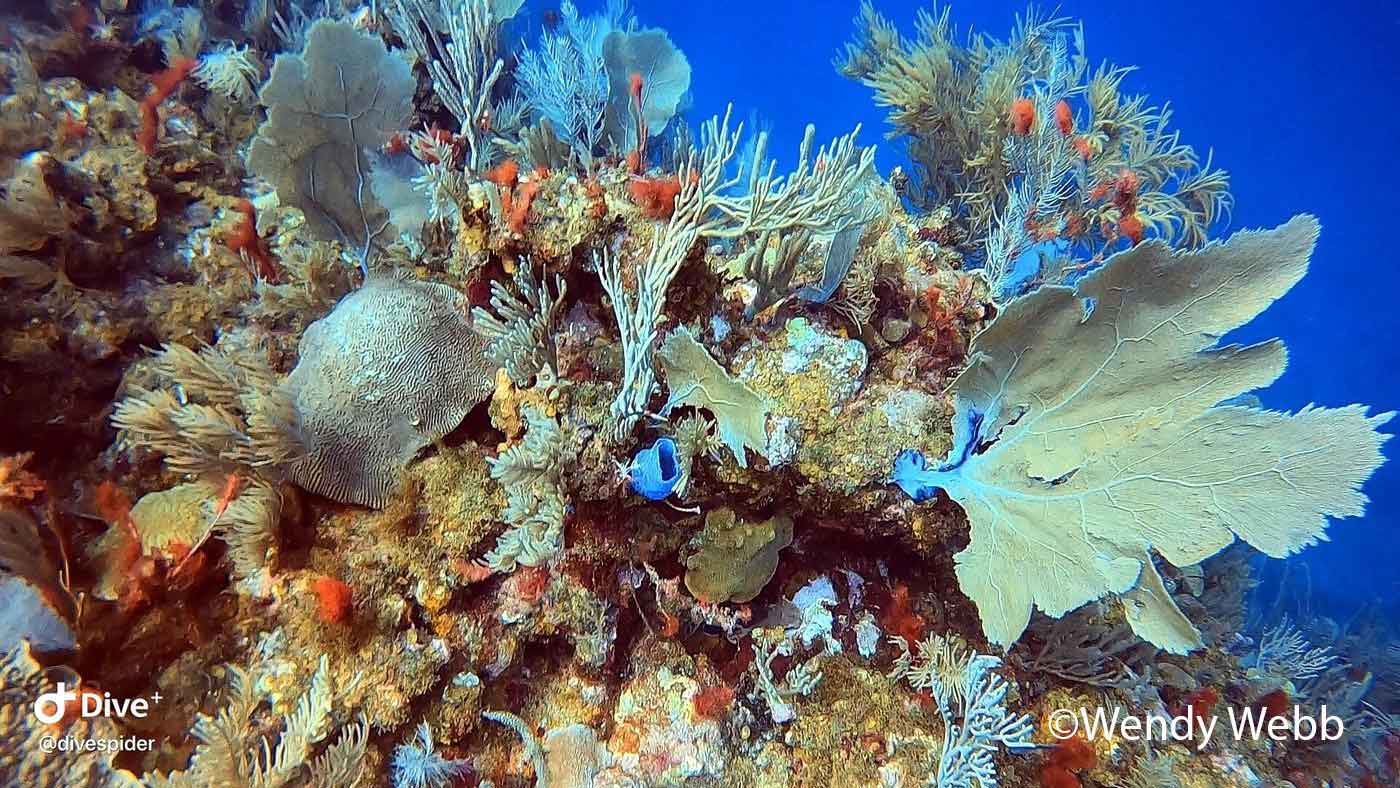
Guanaja’s fringing reef is a protected marine reserve making it an ideal spot for diving and snorkeling nearly anywhere offshore the mainland. It offers a mixture of pinnacles, vertical walls, lava tunnels and wrecks including the nearby Jado Trader, one of the most sought-after wrecks in the Caribbean. It is similar to the diving that made Roatan famous, but shared with only a fraction of the number of divers.
Let's Start at the Top!
The shallow reef areas in Guanaja and surrounding cayes are some of the most vibrant in the western Caribbean. Thick patches of pillar, elkhorn, lettuce and blade coral are interspersed with azure vase, red & green rope and huge barrel and endless encrusting sponges. There are also more purple sea fans per square foot than we have seen anywhere else! This substrate - already stunning in and of itself - is then inhabited by an amazing amount of marine life. Much of it doing its best to hide. All of it bathed in the natural light that makes the colors pop. Don't be in a rush to dive deeper! The shallows are where the true beauty lies and the majority of the fish life!
Swim Throughs
Cathedral, Black Rock Canyon, Sandi's Reef and Wonderful are just a few of the moored dive sites featuring some amazing swim-throughs. There’s nothing quite like the experience, finning along as beams of light randomly pierce through the formations.
If it's summer, you may even be treated to annual spawning of the Silversides. Millions of the Atlantic silversides will swell together for their annual spawning May - July. About five to 20 days later, newborns are hatched and travel in massive swells of schools that can fill the many swim throughs and caverns prolific around Guanaja. Fin forward, and the school parts in front of you. Hover and become entirely and symmetrically encircled by fish as they move in unison as if they are a single creature. Such a treat!
Along the Walls
Diving along the walls at depth is a favorite among those who love to investigate for creatures that hide between the cracks and crevices. Or gaze off into the blue is search of a passing ray or shark. Since there isn't much light, there aren't a lot of reef fish to see. But the cracks and crevices and sponges provide habitat for many species of invertebrates (including crabs and shrimps) and fishes (including gobies, cardinalfishes, and other species).
You are also likely to see a healthy population of Sea squirts or tunicates, especially the Blue Bell and Painted Tunicates. Did you know that unlike the sedentary adults, tunicate larvae are capable of freely swimming like a tadpole?
Magic Macro
For many new divers (especially) the excitement in diving focuses on the "big stuff" such as sharks and rays. But for those divers who have trained their eyes to seek for the small, there is nothing more exciting than finding the diamond in the rough - especially a nudibranch. These tiny, extraordinary creatures are so varied in form and color. And so hard to find, unless you happen to have the eagle-eyes of our divemasters!
What Guanaja may lack in abundance of reef fish, it more than makes up for in invertebrate macro life. Your chances of spotting (or having the dive guides spot) nudibranchs are far higher in Guanaja than most any other destination in the Caribbean.
For more amazing images, take a look at those taken on our house reef by Mickey Charteris, underwater naturalist, photographer, and author of the marine species identification book Caribbean Reef Life.
Sand and Rubble
The creatures that can be found, "hidden in plain site" in Guanaja's sand and rubble areas are just as amazing, if not more so, than the nudibranchs!
Rubble zones provide hiding places for octopus but they are also home to many more unique creatures that burrow or camouflage themselves. Often overlooked (but not by our dive guides!) divers are urged to swim slowly over these areas to see what they can find.
Wreck of the Jado Trader
The 240-foot Jado Trader was a refrigerator freighter sunk in 1987. Nearly 30 years later, it has formed one of the richest artificial reefs in Guanaja. The Trader rests on a sandy bottom, completely intact and in waters between 80 and 110 feet (24 – 33 meters), suitable for experienced divers. The wreck is nicely encrusted and home to a variety of marine critters. The dive returning from the wreck is along a shallow reef teeming with life.
Lionfish Hunting
When it comes to hunting lion fish, we are all in! We hunt for these nasty creatures on every dive. We also encourage our guests to help us find and eliminate them. You can support us by simply pointing out any you see. Additionally, you can try you hand spearing your own with a ZooKeeper. The Zookeeper Lionfish Container unit is a high quality product that provides near puncture proof storage of your lionfish while diving. We'll give you instruction beforehand, and then off you go! The bonus for everyone - the tasty treats our chefs will come up with to feast on them later! Lionfish ceviche, lionfish fingers for appetizers, lionfish sandwiches for lunch to name just a few ways to eat this delicious fish. (Payback!)


